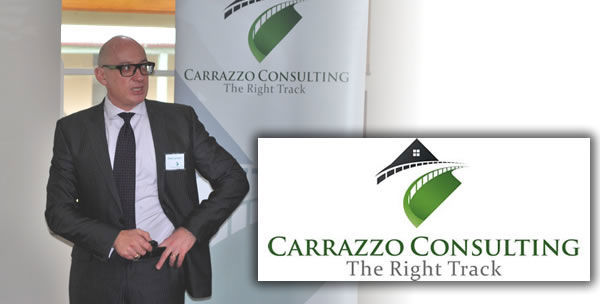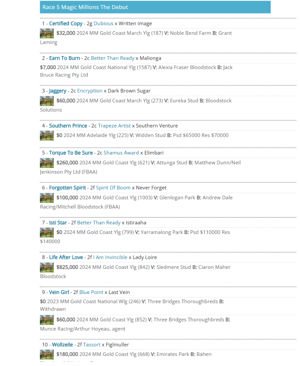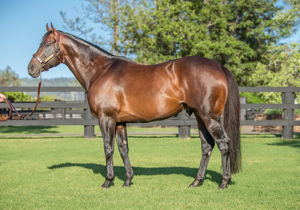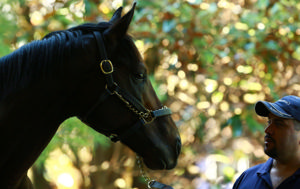Back in April last year I wrote, with unbridled joy, about the Land Tax victory Godolphin had with Revenue NSW.

The “victory” involved Godolphin successfully arguing on appeal to the NSW Supreme Court that, for the purposes of securing land tax exemption, the dominant use of two of its properties in the Hunter Valley was for the maintenance of animals for the purpose of selling their bodily produce or natural increase, notwithstanding the racing related activities that occurred on the properties.
As background, Revenue NSW had originally assessed Godolphin for land tax for the 2014 to 2019 tax years in respect of its two properties (Kelvinside and Woodlands) in the Hunter Valley, contending that although the dominant use of the properties was for the maintenance of animals, that use was not for the required statutory purpose of selling those animals, their natural increase or bodily produce.
The NSW Supreme Court agreed with Godolphin that it conducted an integrated stud operation (involving both breeding and raising thoroughbred horses) such that the dominant use of both properties was for the maintenance of animals for the purpose of selling their bodily produce or natural increase.
In the Court's view, the objectives of winning races and pursuit of stallion excellence were part of the overall objectives of increasing the value of Godolphin's stud operations (being nomination fees in particular and sale of the majority of Godolphin's progeny) and that the sales were sufficiently proximate - if that was a required element - to the maintenance of the animals on the properties.
More particularly, on this view there was no requirement for a dominant purpose of sale, so long as there was a purpose of sale associated with the maintenance of animals on the land. Evidence before the Court indicated that the combined breeding and racing model was unusual for the industry. The sum at issue was $1.438 million.
- COURT OF APPEAL DECISION
To the disappointment of many of us, Revenue NSW, on appeal, recently had this Godolphin decision overturned.
The Court of Appeal has held that rural land used for a business that combined the breeding and racing of thoroughbred horses was not entitled to the exemption for land used for primary production. In other words, they successfully argued that the dominant use of the land was not for the maintenance of animals for the purpose of selling them or their natural increase or bodily produce.
The appeal court argued that the text and structure of the exemption rules as a whole, and the relevant authorities, indicated that the concepts of “use” and “purpose” are connected and should not be considered separately. In their words “use of land cannot be mixed into a conglomerate “animal maintenance” to which a purpose of sale then adheres.”
The court was prepared to accept that maintenance of animals could be made up of integrated uses but those could still have separate purposes. However, it was considered that the maintenance of animals on the land was comprised of integrated uses of breeding and racing, and each was conducted for dual and complimentary purposes, expressed succinctly in the Darley business credo “breed to race, race to breed”. In short, it was held that Godolphin had failed to show that one of those purposes predominated over the other.
Maybe all is not lost for industry players that seek land tax exemption who have a similar business model to Godolphin as the industry giant has sought leave to appeal to the High Court. Using an old racing adage, the race is far from over! Carrazzo will continue to monitor this case closely and update the industry on all major developments.
The case illustrates the issues that can arise when primary production land is used under business models that involve interrelated activities or integration of business activities. As it stands today, the test for exemption for primary production land is an all-or-nothing-test and this case shows that the purpose for which land is used can be just as important as the land use itself.
- WHAT DO WE LEARN FROM THIS CASE
- This area of land tax exemption needs to be carefully considered by advisors, especially when dealing with State revenue authorities wishing to crack down on so called “abused” privileges.
- Breeders who race too many offspring can not only compromise potential land tax exemption, but also income tax and GST business/enterprise status.
- A Business Plan should always be prepared that expressly state the dominant use of the land and on what basis that is determined.
Please do not hesitate to contact the writer if you wish for me to clarify or expand on any of the matters raised in this article.
PAUL CARRAZZO CA
CARRAZZO CONSULTING PTY LTD
801 Glenferrie Road, Hawthorn, VIC, 3122
TEL: (03) 9982 1000
FAX: (03) 9329 8355
MOB: 0417 549 347
E-mail: paul.carrazzo@carrazzo.com.au
Web: www.carrazzo.com.au










